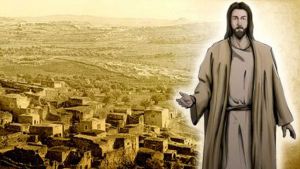Overlooking the beautiful, historical city of Oviedo from the slopes of Mount Naranco is one of the most unique medieval buildings to be found in all of Spain: Saint Mary of Naranco.
It was originally intended to be a Palatine classroom consisting of two floors built on a rectangular foundation of 6 x 20 meters and with a symmetrical structure. In the mid 9th Century King Ramiro the 1st ordered its construction for his private use, and it was to have ceremonial functions.
Saint Mary of Naranco´s exterior was a plasterwork of ocher coloured stucco and its interior contained decorative paintings with geometric motifs, though these were sadly lost in the building´s restoration work in 1929.
At the time of construction, a major expanse of the peninsular territory remained under Muslim rule, and their buildings were recognised for the profuse use of wood in ceiling design, with coffered ceilings being the norm. Unlike these Arabian constructions, only stone was used to build Saint Mary of Naranco and the barrel vault was lightened using limestone tuff which is a low-density porous stone. The barrel vault was reinforced with arches resting on buttresses outside of the building which evened out the strain. It also used a banked arch for the first time ever in Asturian architecture with the aim of accentuating the streamlined nature of the overall structure.
The spatial conception, careful decoration, and delicate proportions, along with the use of Corinthian columns indicate a very striking influence of Roman architecture. Most probably the anonymous architect was a firm believer in, and profound connoisseur of these kind of construction techniques. The Asturian monarchy upheld a close relationship with Carolingingian monarchy of Central Europe, whose buildings in Aachen most likely offered an exemplary model for Asturian buildings. Asturian monarchs wished Oviedo to become a Christian importance of comparable importance to that of Toledo prior to Muslim invasion. In order to achieve this, they requested ownership from the Muslim community over the relics of Saint Leocadia, Patron Saint of the city, and asked for their transfer from Toledo to Oviedo.
In the “Ordo Visigothorum” it is told that when the King marched to war with his armies each Spring a ceremonial court of notable religious character was held in the Palatine classroom. In this ceremony both King and Bishop accessed the lower floor of the classroom where the prelate submerged the King in the liturgical bath to be blessed with holy water. Once dried he donned a white robe, and he, the Bishop and acolytes climbed to the upper floor.
Once upstairs the King was anointed, cloaked, and handed the ´labaro´ (an implement of Roman origin made of a cross kick with arms expanding out to either sides) whose purpose was for display in battle as a sign of power, presiding over the armies. The bishop then blessed the noble knights from the entrance to the small chapel or the belvedere on the upper floor. Lastly the King passed from one belvedere to another to receive the joy and well wishes of the people present.
Every year Saint Mary of Naranco receives hundreds of thousands of visitors and pilgrims. It is a wholly magnificent building, a true masterpiece of refined craftmanship and attention to detail, unique in both time and style, evocative of palatial life and the importance of faith in a relatively new Asturian kingdom seeking legitimacy as a Christian Kingdom and hoping to reclaim the Muslim-occupied Visigoth territory.






